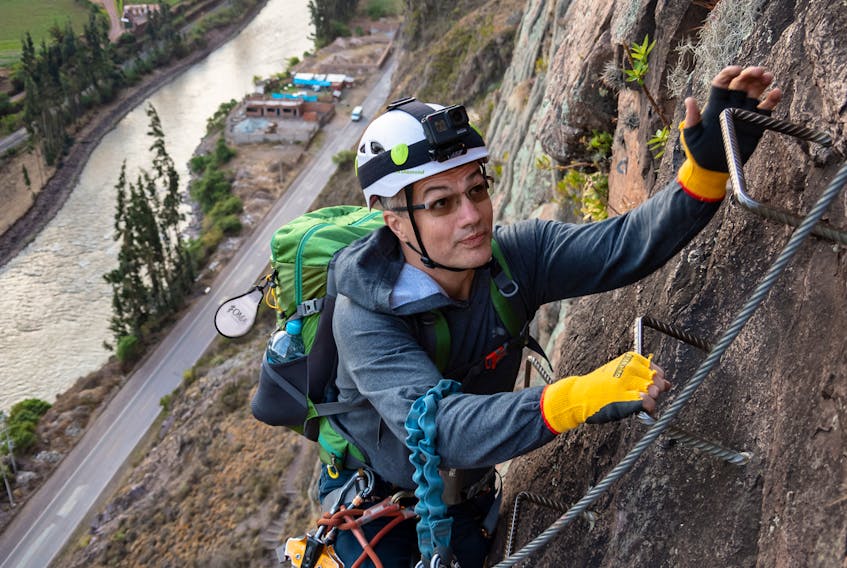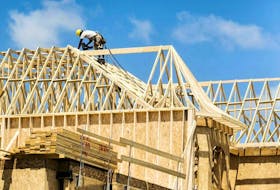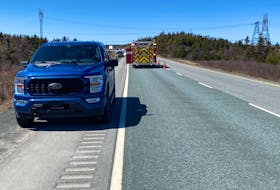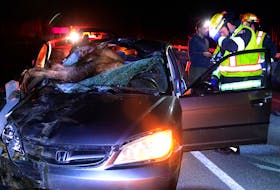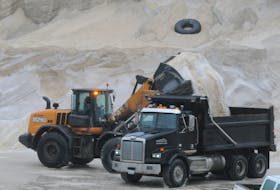ST. JOHN'S, N.L. — First in a series profiling frontline workers of the pandemic
He’s screened patients from the funeral home cluster, and got a scare when he thought COVID-19 was spreading through a St. John’s long-term care home.
Dr. Steve Major is a family physician of 25 years, currently working at Campbell Medical Group in downtown St. John’s.
The 51-year-old is also responsible for providing care at two personal care homes in St. John’s, does part-time emergency room shifts for Eastern Health and works shifts at the St. Teresa’s COVID-19 assessment clinic.
Working with COVID-19 patients
Ironically, even though he’s screened COVID-19-positive patients, Major says he feels safer working at St. Teresa’s than he does going to the grocery store, or working at his clinic, where he doesn’t have the same access to personal protective equipment (PPE) because there’s limited availability.
“It’s a very meticulous operation so that everything is wiped down, and you’re wearing full protective equipment,” he explains, listing the PPE workers don at that site: a face shield, mask, gloves, gown and long booties.
But with all that gear, Major says, it’s difficult to communicate with patients.
“Patients can’t read you, and you can’t read them because of the fact of that lack of facial recognition, and it’s really interesting trying to be reassuring, but you don’t have that facial ability to read people as well.”
And while the public worries about catching COVID-19, Major says his fear is catching it and passing it on to his patients.
“I’ve been in medicine a long time, and worked in (emergency) and seen lots of things that can give you nightmares at night, and basically the biggest thing is to do no harm.
“It’s just a heightened anxiety about interaction, and how we interact with our patients. I’m somebody who, for my patients who’d need a hug, I’d give them a hug, and that would be fairly common in my practice. And now when you have social distancing, and that lack of ability to comfort patients when they need it, or just to have that sense that somebody cares about you, and to try to convey that when you’re wearing a mask and you can’t have any contact with a patient is a struggle.”
Long-term care scare
Major says perhaps his biggest scare during the crisis came shortly after St. Patrick’s Day, right after the outbreak with the funeral home cluster.
Residents were getting sick at a long-term care home where he works, and he became ill, too.
“I really thought for sure that it was COVID-19, and that, I gotta say, really scared the living daylights out of me because that’s the people I worry about, in the long-term care homes. … I thought for sure that was going to be a bomb.”
At that point, the home was already closed to visitors, but he said it’s difficult to keep residents socially distanced in long-term care homes, especially when people share bathroom facilities and live in close proximity, and many have cognitive impairments, such as dementia.
“That’s part of the reason why if you get a COVID-19 outbreak in there, it can spread so easily.”
It turned out to be influenza A, which is still a serious concern for older populations. Two residents ended up in hospital, but everyone recovered, and the two in hospital are now back at the home.
Health care innovation amid crisis
Major says the use of virtual appointments should remain common practice once the crisis ends. He says the health-care system was already strained before the COVID-19 pandemic began.
“When we cut back to a volume that’s going to be reasonable, associated with proper protection for our patients and our health-care workers, it’s going to be difficult to deal with backlog in patients, and provide the same regular care that we had provided before.
“Crisis is part of what gives us innovation, and so there’s an opportunity for us to rejig the system, if possible, and change the way we do it to be more efficient.”
@juanitamercer_

